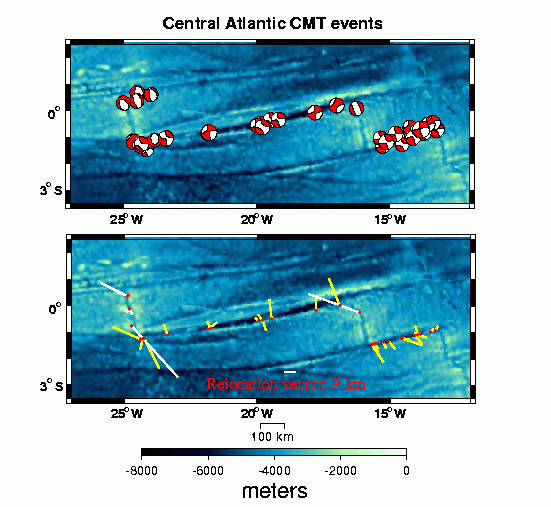
In addition to the construction of more detailed and accurate global velocity models, we have focused our efforts on building a larger database of reference or ``ground-truth'' events to be used for model calibration. So far, the geographical distribution of events with locations known to an accuracy of 5 km or better is extremely limited. Many of these events are nuclear explosions and are concentrated in only a few source regions, making comprehensive testing of velocity models and calibration of new seismic stations very difficult. We are experimenting with relocation of events on remote plate boundaries using a technique which constrains the location to a point along the plate boundary. For example, by limiting the process to only large events for which a Centroid Moment Tensor (CMT) solution exists, an assessment can be made as to whether an event should be located along a mid-ocean ridge segment or an adjacent transform fault based on its focal mechanism. We then perform a transformation of coordinates into the system defined by the pole of rotation between the two plates, such that the ridge or transform fault lies along a parallel or meridian. We use accurate bathymetry to determine the precise location and trend of the boundary [Smith and Sandwell, Science, 277, 1956-1962, 1997]. In the subsequent location process, the coordinate (latitude or longitude) which corresponds to the plate boundary is held fixed. In this way, we are able to develop a master set of events which can then be used to relocate other smaller events in the same region.
We have thus far compiled a catalog of these events along most of the transform faults in the Atlantic, Pacific, and Indian oceans. The figure below shows the relocation of events along the Romanche Fracture Zone (RFZ) in the central Atlantic. The top panel shows the ISC locations of events in the CMT catalog. After relocation (middle panel), the strike-slip earthquakes associated with the RFZ lie along the trend defined by the bathymetry. The ISC locations are systematically displaced to the south relative to the RFZ, and the apparent mislocations are as large as 40 km. The results obtained thus far are promising but require extensive testing to determine the accuracy of the relocations.

Relocation of earthquakes in the central Atlantic. The top panel shows the focal mechanisms of large earthquakes in the region plotted at their CMT catalog locations. The bottom panel shows the change in location of these same events. Scale of 9 km is shown. Normal faulting events are identified with ridge segments and strike-slip earthquakes with transform faults. Relocation vectors are plotted at the new locations (red dots) and point in the direction of the starting location.